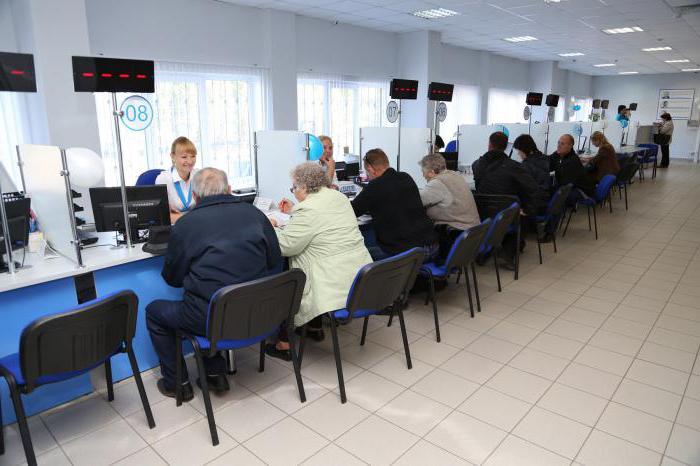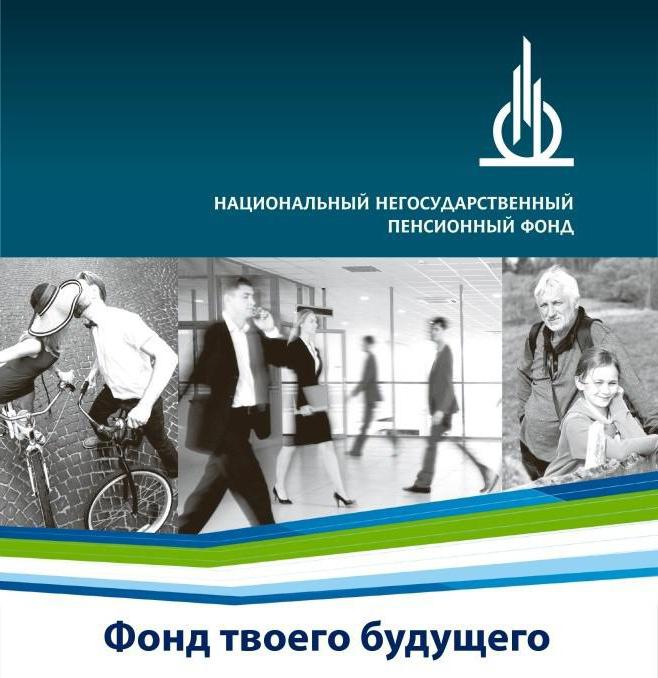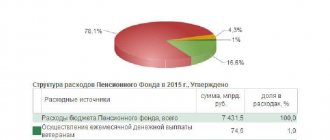Legal advice > Social security > Pension > Note for pensioners: is it worth joining a non-state pension fund
Today, due to the difficult economic situation in the country, most middle-aged people no longer have much hope for all possible assistance from the state in providing them with a dignified old age.
It is in pursuit of social guarantees that many Russians transfer their savings to NPFs - non-state Pension Funds. What kind of structure is this? What bonuses and, most importantly, risks exist when transferring your savings to a non-state Pension Fund? Let's try to figure it out.
One of the solutions to the problem
In order to improve the well-being of elderly citizens, non-state pension funds (NPFs) were created. Of course, they did not appear yesterday, and many of us know about their existence.
At one time, there was even a large-scale advertising campaign, the purpose of which was to attract as much investment as possible into the above structures. People began knocking on the door of pensioners and inviting them to become participants in the new program. That’s when the question arose: “Is it worth moving to a non-state pension fund?” To understand, let’s first define what this legal entity is.
Concept
As you know, a pension savings account is opened for each person. We work, we receive a reward for this, part of which goes to the Pension Fund, which distributes the material asset, again, partially accumulating it for the funded part of the pension. This is how a person secures his old age through his own efforts.
NPF is a legal structure that is controlled most carefully by the state. Moreover, all deposits that fall into it are insured. Therefore, if it suddenly happens that NPFs disappear from the market, their monetary assets will automatically be transferred to the deposits of the state Pension Fund. However, the following should be taken into account: NPFs carry out competent investment of depositors’ funds in securities, state corporations, bank deposits, accounts with credit institutions, etc.

Naturally, the citizen becomes richer as a result of such investments.
To be or not to be?
When considering whether to transfer to a non-state pension fund, it is important to understand the following: the amount of social benefits for people who will retire in the future consists of three parts. Basic (6%) - forms benefits for older citizens (men after 60 years and women after 55 years). Insurance (14%) – accumulates on the employee’s personal account, but over time it is “eaten up” by inflation. Cumulative (2%) - aimed at providing a high-quality material basis for the future pensioner. It is the last of the above parts of social benefits that is of primary importance. Naturally, a rate of 2% is clearly not enough for a person to feel financially confident when he goes on a well-deserved vacation. As for the NPF, its base rate is not 2%, but 6%. Of course, this detail clarifies the question of whether it is worth moving to a non-state pension fund. And yet, when deciding it, there are both pros and cons. Let's list the main ones.
Guaranteed pension from the Pension Fund of Russia
Many believe that the state structure is better, since it guarantees payment of a pension upon reaching a certain age. But recently, citizens have often begun to be denied money because they do not have enough experience or pension points. Usually the problem is the latter, but these points can be purchased before retirement.
There is an insurance and social pension. The first is about 12,000 rubles at the federal level, but its size may vary depending on the region. A certain category of citizens receives social benefits, and the amount rarely exceeds 5,000 rubles.
Thus, if you rely on a pension from the state, the payment will be small. To receive about 25,000 rubles, you need to work officially for a salary of at least 60,000 rubles.
pros
Some experts, when asked: “Is it worth moving to a non-state pension fund?”, confidently state: “Yes!” Why?

Firstly, the monthly payment amount will be made up not only of contributions from individuals, but also of the income portion, which is formed by assets obtained through investing the money supply. However, when deciding whether it is worth switching to a non-state pension fund and what benefits can be obtained from this, it is important to consider the following: in rare cases, the agreement fixes the amount of profit, so as to predict under what scenario the economy will develop on the world market, and what the profit will be The results of the game on the stock exchange are very difficult.
An important advantage of the old-age program under consideration is that it provides for the safety of invested assets: if some projects turn out to be unprofitable, then this will not decrease the amount of money in clients’ accounts, since the structure compensates for the damage from its own reserves.
Do you doubt whether you should switch to NFP? Perhaps you will be given confidence by the fact that if any change in the financial market occurs, the structure will not ignore this and will adjust the investment plan for the year, taking into account the emerging trends.
Why is it worth switching?

When transferring a private fund to a non-state pension fund, a citizen receives additional benefits, such as:
- higher percentage of investment activity;
- indication of heirs when signing the OPS agreement;
- financial liability on the part of NPFs for the deposits of insured persons;
- when the license is revoked, the NP is returned to the Pension Fund;
- the ability to terminate the contract at any time (but preferably no earlier than 5 years);
- protection against inflation;
- high level of service;
- online access to the amount of savings;
- openness – the fund is obliged to publish annual reports in the public domain.
Minuses
However, there is also a share of experts who answer the question: “Is it necessary to transfer to a non-state pension fund?” without hesitation, answer in the negative. Why?

Firstly, if the financial year turns out to be unfavorable, then there can be no talk of any stability of income.
Secondly, if the above structure for some reason loses its license, then the prerogative to transfer funds to another NPF and finance this procedure falls on the shoulders of the investor. Yes, these disadvantages cannot be called significant, and yet they cause some discomfort, but there are still more advantages. Of course, everyone must decide on an individual basis whether they need to transfer to a non-state pension fund.
Which fund is better?
When choosing a non-state pension fund, you should pay attention to such points as:
- Profitability for the entire period of work.
- Availability .
- Work period.
- Availability of a license.
- Reliability level.
- Volume of funds.
- Composition of founders – you should not trust small funds and individuals.
- Openness and accessibility of information.
- Positive customer feedback.
- Availability of convenient service (hotline, office near home).
When choosing a non-state pension fund, it is worth considering several indicators, not just profitability.
Over the past 4 years, citizens have given preference to such funds as:
- Lukoil - Guarantor.
- Sberbank.
- Gazfond.
Features of the procedure
For many, the question remains unclear: “Is the transition from the Pension Fund to the Non-State Pension Fund a right or an obligation?” Naturally, no one can force anyone to undergo this procedure, since it is voluntary. Moreover, you can write a corresponding application for transfer to a non-state structure at any time of the year; this is done once every 12 months. The document must necessarily indicate the legal entity where the funded part of the pension will be accumulated.

Procedure for carrying out the procedure
Don’t know how to transfer to a non-state pension fund? You need to do the following:
1. Determine the structure you trust most. Analyze reviews of people who have invested money in a particular NPF, check how many years it has been on the market, and read the company’s legal documentation.
2. Conclude an agreement providing for compulsory pension insurance and study its text in detail. The document must clearly state in what amount and with what frequency contributions must be made. Before signing the document, it would be a good idea to develop an individual pension plan with your employees, which will indicate approximate figures with the option of adjusting them, depending on the financial capabilities of the future pensioner. Flexible replenishment of savings is one of the beneficial conditions for the client.
3. Before December 31, address the territorial body of the Pension Fund of the Russian Federation with an application for transfer to a non-state pension fund.

4. Wait for written notification of the decision.
Now you have an idea of how to transfer to a non-state pension fund.
Branches
423450, Republic of Tatarstan, Almetyevsk, st. Mayakovskogo, 60, phone:
420124, Republic of Tatarstan, Kazan, st. Sibgata Khakima, 17, telephones: , 8(843)223-09-38
194156, St. Petersburg, Parkhomenko Avenue, 12, telephone:
423800, Republic of Tatarstan, Naberezhnye Chelny, M. Jalil Ave., 29/2 (GES settlement 4/01), 3rd floor, office 314, telephone:
423584, Republic of Tatarstan, Nizhnekamsk, Shinnikov Ave., 53A, office 26, telephones: ; 8(342)254-34-99
344006, Rostov-on-Don, Kirovsky Ave., 51, letter “B”, office 213, telephones: , 8(863)292-36-64
453124, Republic of Bashkortostan, Sterlitamak, st. Mira, 18, 2nd floor, office 2-3, phone:
450005, Republic of Bashkortostan, Ufa, st. Revolutionary, 70, bldg. 1, phone:
428000, Russian Federation, Chuvash Republic, Cheboksary, st. K. Marksa, 52, bldg. 2, office 131, phone: 8(8352)39-53-10
422980, Republic of Tatarstan, Chistopol, st. K. Marksa, 47A, office 5, phone: 8(84342)5-25-18
Methods for submitting documentation
You can submit your application personally to a Pension Fund employee. Be sure to take your SNILS and passport with you. And do not forget to request the appropriate receipt when accepting documentation.
You can also send an application for transfer to a non-state pension fund through the MFC system.
It is not prohibited to address the above document by mail. In this case, you will have to use a registered letter with attachment and notification.

The envelope will need to be sealed with an application filled out on a special form, photocopies of SNILS and passport.
Reliability
Another important indicator is reliability. It is sometimes also called the level of trust or trust. The national rating agency gives a high rating to the NPF called “First National” in this area. Today, reliability is rated A++.
According to statistics, there are no higher trust indicators. This means that the National Non-State Pension Fund will not be abruptly closed, its license will not be taken away, you can entrust pension savings to the corporation and not be afraid for them.
But many are put off by the fund’s position, which is far from leadership, in the list of non-state pension funds in the country. A reliable, stable organization with good profitability, but for some reason it is far from the leading places. Why? What features of cooperation can be identified from the foundation? What are your visitors satisfied or dissatisfied with?









